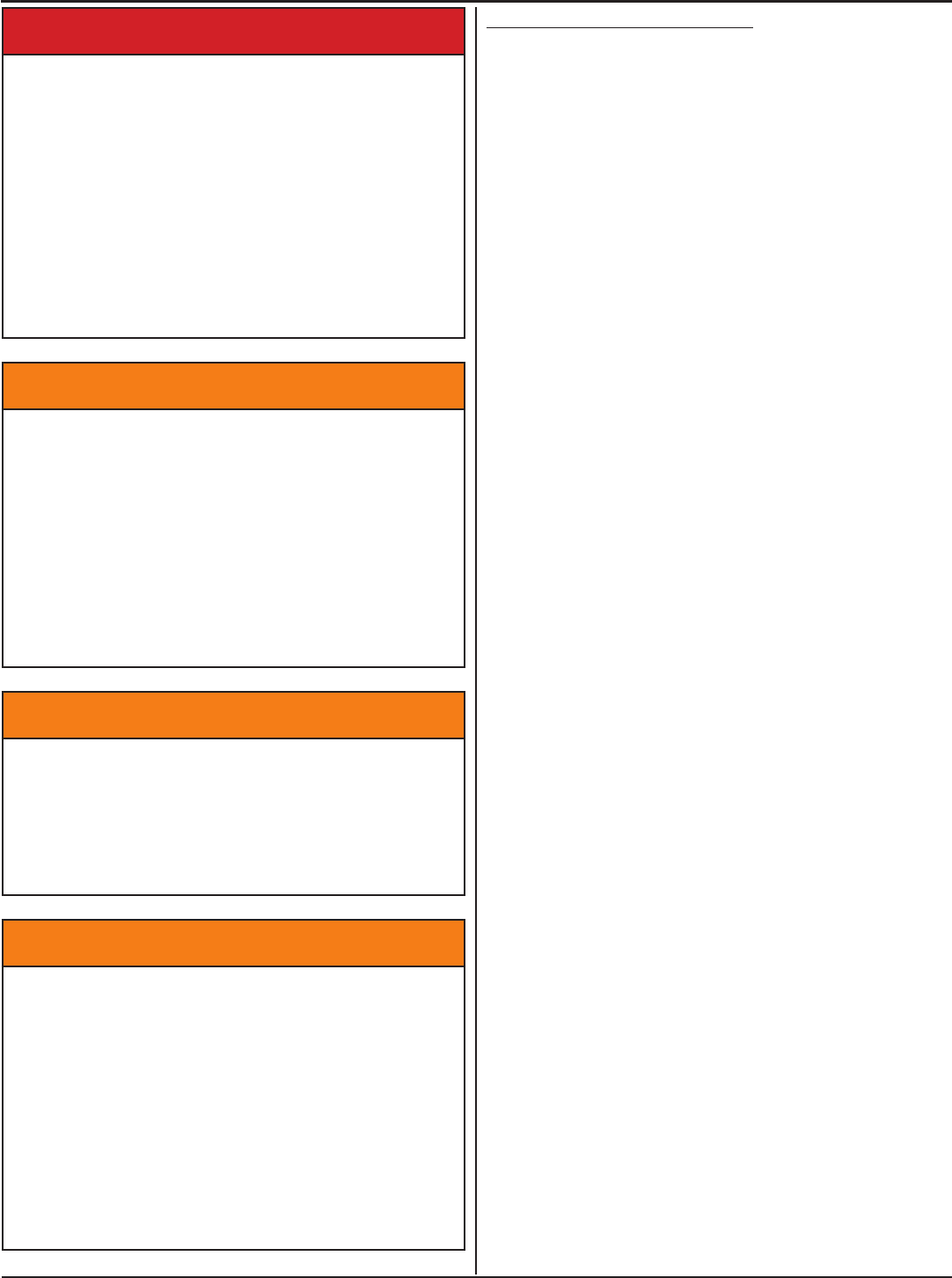Operating Guide

12
^ DANGER
NEVER alter or substitute any hydraulic
system component. Death or serious injury
may result.
An altered or component substituted
hydraulic system may malfunction,
resulting in the dump body falling without
warning.
NEVER alter or substitute any hydraulic
system component.
^ WARNING
Electrocution hazard.
Dump body coming near or contacting
power lines can cause electrocution.
Electrocution can occur without contact.
Verify there are no overhead power lines
over or near the trailer before raising dump
body.
^ WARNING
A soft and/or uneven surface may cause
tow vehicle and trailer to tip over when
dump body is raised.
Raise dump body ONLY if tow vehicle and
trailer are both on a rm and level surface.
^ WARNING
An overloaded trailer or improperly
distributed load can result in death or
serious injury.
An overloaded trailer can cause hydraulic
system to malfunction, resulting in dump
body falling.
A load that is improperly distributed in the
trailer can result in the trailer tipping over
when the dump body is raised.
2.2.16 traIler towIng guIde
Driving a vehicle with a trailer in tow is vastly different
from driving the same vehicle without a trailer in tow.
Acceleration, maneuverability and braking are all
diminished with a trailer in tow. It takes longer to get up
to speed; you need more room to turn and pass, and
more distance to stop when towing a trailer.
You will need to spend time adjusting to the different
feel and maneuverability of the tow vehicle with a
loaded trailer. Because of the signicant differences in
all aspects of maneuverability when towing a trailer, the
hazards and risks of injury are also much greater than
when driving without a trailer.
You are responsible for keeping your vehicle and trailer
in control, and for all the damage that is caused if you
lose control of your vehicle and trailer.
Find an open area with little or no trafc for your rst
practice. Before you start towing the trailer, you must
follow all of the instructions for inspection, testing,
loading and coupling. Also, before you start towing,
adjust the mirrors so you can see the trailer as well as
the area to the rear of it.
Drive slowly at rst, 5 mph or so, and turn the wheel
to get the feel of how the tow vehicle and trailer
combination responds. Next, make some right and
left hand turns. Watch in your side mirrors to see how
the trailer follows the tow vehicle. Turning with a trailer
attached requires more room.
Stop the rig a few times from speeds no greater than
10 mph. If your trailer is equipped with brakes, try using
different combinations of trailer/electric brake and tow
vehicle brake. Note the effect that the trailer brakes
have when they are the only brakes used. When
properly adjusted, the trailer brakes will come on just
before the tow vehicle brakes.
It will take practice to learn how to back up a tow vehicle
with a trailer attached. Take it slow. Before backing up,
get out of the tow vehicle and look behind the trailer to
make sure that there are no obstacles.
Some drivers place their hands at the bottom of the
steering wheel, and while the tow vehicle is in reverse,
“think” of the hands as being on the top of the wheel.
When the hands move to the right (counter-clockwise,
as you would do to turn the tow vehicle to the left when
moving forward), the rear of the trailer moves to the
right.
Safety










